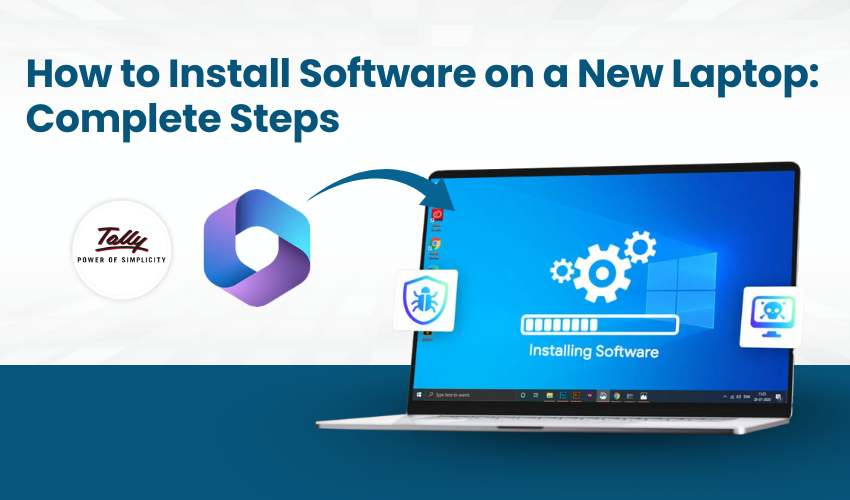How to install software on a new laptop

How to Install Software on a New Laptop: Complete Steps
Installing software on a new laptop isn’t just about clicking "Next" a few times. It’s a process that requires attention to detail and a clear understanding of each step. Whether you're setting up tools for work or everyday use, this guide will help you install any software correctly, without missing a step or causing issues.
Download the Correct Installation File from a Trusted Source
Before installation begins, you must download the correct file. Use only official websites or trusted platforms to avoid downloading harmful or corrupted software. Make sure you choose the version that matches your operating system, Windows, macOS, or Linux. Downloading from unofficial sources can lead to malware, compatibility issues, or unstable software performance.
Open the Installer and Begin the Installation Process
Once you’ve downloaded the file, find it in your system’s Downloads folder or wherever your browser saves files. Double-click to open the installer. This action begins the setup process. You may see a security prompt asking for permission. Grant access, and the installer will start loading the necessary components for installation.
Follow On-Screen Prompts and Accept the License Agreement
After launching the installer, you’ll see a series of screens with setup instructions. Read each screen carefully. Most installers will ask you to accept a license agreement before proceeding. You must accept it to continue. Skipping through these prompts too quickly may cause you to install unwanted features or ignore critical settings.
Choose Installation Location and Customization Options
The installer may ask where to install the software. You can either go with the default location or choose a custom directory. Some setups also include optional features that you can enable or disable. If you’re unsure, leave the default options selected. Making changes without understanding their impact may cause problems later.
Wait for the Installation to Finish Without Interruptions
Once you confirm the installation settings, the software will begin installing. During this time, do not shut down the laptop or run heavy tasks in the background. Let the process complete without interruptions. Depending on the software size and your system’s speed, this step can take a few seconds or several minutes.
Complete Final Setup or Restart the System If Prompted
After the installation is complete, the software may require additional setup steps. These include setting preferences, agreeing to privacy terms, or restarting your laptop. Follow all instructions provided by the installer. If a restart is recommended, save all open work first, then allow the laptop to reboot before using the software.
Launch the Software and Configure the Initial Settings
When installation is finished, launch the software from your applications list or desktop shortcut. The first run may take longer than usual as the software initializes. Some programs will open a setup wizard to help you configure initial settings like display options, file associations, or user preferences. Complete this setup to optimize usage.
Check for Software Updates Immediately After Installation
After you install and launch the software, it’s a good habit to check for updates. Many installers do not include the latest version. Updating the software right away ensures it has all recent bug fixes and security patches. Most applications have a “Check for Updates” option in their settings or help menu.
Create a Shortcut or Pin the Program for Quick Access
To use the software regularly, create a shortcut on your desktop or pin it to the taskbar or dock. This saves time and reduces the need to search for it every time. Most installers ask during setup if you want to add a shortcut, check this option for quick access.
Conclusion
Installing software on a new laptop is a process that demands care and attention. By following each step correctly, from downloading the installer to final setup, you reduce the chance of errors, improve system stability, and make sure the application runs as intended. Always read each prompt, install only from trusted sources, and check for updates after installation.
